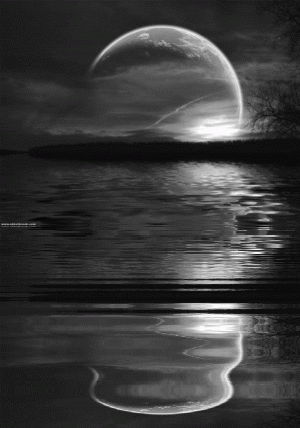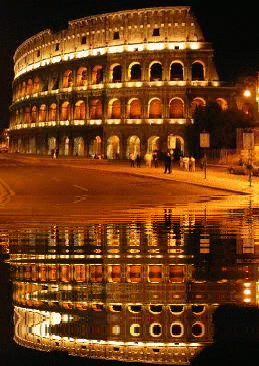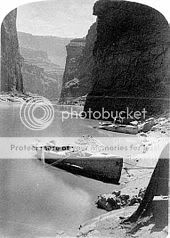We are two being in one. We are female and male in one body.
its up to you to figure it out























Hello everyone
I am eastern Star and forgive me but I will not reveal my true name for safetiness :) and forgive my terrible english :) I am from Italy, Rome, and I love My City so so much with many great histories and stories of people who lived and died before us, So I thank them.






Please do give me a chance to make my profile better cause Since I work and study I can't make all things in less time of hours :)

I am not a person who likes to wear fashion but I love fashion designing. Being in love with fashion doesn't mean that I have to follow the trend or else I would be working and become a slave or shopaholic LOOOL and I hate shopping, but I don't mind going in the shops and seeing trends and the fabrics and all. I have a HUGE Fetish for Chains and leathers specially a jacket or gloves and boots. I love shoes sooo much but no heels please or the next step I will take will be in hospital bed for a month or two :P hahaha I go total lost also for hats. I hate putting on make up. It has to be a goth or punk night or halloween to put it on me. But I don't mind seeing other people putting it on them to make themselves nice.

I like tattooes and I have one already and small. Next one will be much much biggie. All my back will be undergoing for some months under a tattooist and its going to cost me on thousand euros if not more.
(the tattoo I am going to show you is not mine neither the bodies)
1. 
2. 
I am in love with history and Art, sculpture and folklores of every country. I also like alot Asian and Native Americans folklore and legends.

I am not a racist nor in to any religion. I like Lucifer for who is so beautiful and cunning and sexy. But that does not make me in to a satanist. I have nothing against them anyways. As long as they let me live in peace I shall do the same :)
I like girls alot and guys too. But guys need to be a very perfect specimen to be attracted to them. :)
I like joking around and cracking jokes is my favorite time in the day is during class of Ceramics since its a bit boring ....

~Magickal Graphics~


I do play silly games like monopoly at times with my friends in their apartment, making silly fashion shows as catwalk with guys making them wearing girls underwear and skirts and heels and whoaaaaaaaaa soooo funny hahahaha

Don't ask me about love cause its a weird name, like something I rather run away from. Been hurt so much.

My goal? Become an artist and also a teacher to teach Asian teenagers some art and history and folklore. Its a huge challange But I ain't gonna give up

I DO NOT ACCEPT HARRASMENT OF ANY TYPE AND ALSO DON'T CYBER SEX WITH ME CAUSE IT WHAT MAKES YOU A PITIFUL PERVERTED DICKCCUP










World's Most Beautiful Scenes
World's Most Beautiful Scenes - The best things in life are free
The world we live in is a fantastic and an amazingly beautiful place. We are all in such a hurry so much of the time that we often forget to stop and admire the natural beauty all around us. At the same time few of us will explore farther a field to find those particular scenes that stand out as true testaments to the beauty of nature - not for lack of ability, but often because we simply don't know what's out there. There is nothing more breathtaking and nothing as able to put your life in perspective as seeing some of the world's most beautiful scenes. Here we will look at what some of the world's most beautiful scenes are, what they entail, and how you can find them for yourself.









The Northern Lights:
The northern lights must be one of the world's most beautiful scenes and are all the more fantastic for the fact that they are not seen in many parts of the world. These lights, which can be seen from the North pole, Scotland, and other regions during the right times, spread amazingly vivid colours across the sky and interact with the stars to provide one of the most truly breathtaking sights and surely one of the world's most beautiful scenes.


The info I gathered so do not bother much if you dont understand LOL )
Constellations and Mythology
The Northern Hemisphere, Circumpolar Constellations
Cassiopeia
Cassiopeia was the wife of King Cepheus. She was very pretty, and would often brag that she and her daughter were more beautiful than the sea nymphs, the Nereids. They complained to Poseidon, who sent a monster to Cepheus' land. In order to save their country, the king and queen sacrificed their daughter, Andromeda. Just before the monster, named Cetus, ate the princess, Perseus saved her. All five figures are represented in the sky as constellations. Cassiopeia has a very distinct shape. She looks like a "W" or "M" in the sky, depending on where she is. Some legends say that Cassiopeia was chained into the sky and sometimes hangs upside-down to remind others not to be so boastful. Cassiopeia is a northern circumpolar constellation, so it can be viewed all year long. It is home to several clusters, or groups of stars. M52 is a large cluster on the western edge. With a telescope, many distant objects can be spotted. There are a few nebulae within Cassiopeia, including the Bubble Nebula and IC 1805. This nebula is located just to the east of the constellation. Finally, a number of galaxies can be spotted, including NGC 185, which is a small distance south of the "W".
King Cepheus
Cepheus was king of a land called Ethiopia in Greek myth. He had a wife named Cassiopeia and a daughter, Andromeda. Cassiopeia liked to brag about her beauty so much, that she said she and Andromeda were more beautiful than the Nereids. Poseidon got very angry, and sent a sea monster to kill Cepheus and his family. Andromeda was offered as a sacrifice, and just when the sea monster was going to eat her, Perseus saved her. All four people, along with the monster, are in the sky as constellations. Cepheus looks like a house. The point on top is a special star called a cepheid. These stars are used to measure long distances. Just below the constellation is another cepheid. This red star would be the North Star if we lived on Mars. There are several galaxies, star clusters and nebulae within Cepheus. However, most are very dim and can only be seen with a telescope. If you have a telescope to use, browse this old constellation to find many celestial objects.
Draco the Dragon
Draco the dragon is a circumpolar constellation, which means it revolves around the North pole. It can be seen all year round. Draco is only present in the Northern Hemisphere, so those living in the Southern Hemisphere will never see this long constellation. The easiest way to spot Draco is by finding his head. It consists of four stars in a trapezoid, burning brightly just north of Hercules. From there, the tail slithers through the sky, ending between the Big and Little Dippers. The end of the constellation is held by Thuban, which was the pole star over 4,000 years ago. Several galaxies and even one nebula is found within the constellation. The Cat's Eye Nebula is a favorite among astronomers. Many myths revolve around this chaotic dragon. It is said in Greek myth that a serpent named Ladon guarded the golden apple tree. One of the twelve labors of Hercules was to steal apples from this well-guarded tree.
Ursa Major (The Great Bear)
Ursa Major is probably the most famous constellation, with the exception of Orion. Also known as the Great Bear, it has a companion called Ursa Minor, or Little Bear. The body and tail of the bear make up what is known as the Big Dipper. Also called names such as the Plough, the Wain and even the Wagon, this constellation has a lot of history behind it. Several different cultures saw a big bear in the sky. The ancient Greeks had a few different stories to explain how the animal ended up there. In one story, Hera discovered Zeus was having an affair with Callisto and turned her into a bear. Zeus put her in the sky along with her son, Arcas, who became the Little Bear. Ursa Major is full of unique celestial objects. Two of the stars, Dubhe and Merak, are pointer stars. If you are looking at the Big Dipper, the outer edge stars that make up the "bowl" of the handle are the two stars, with Merak being the one on top. Connect a line between the two, and extend it north a distance about five times the distance between them. It will connect with the North Star, Polaris. If you connect the handle of the dipper with a line, it will lead to the star, Arcturus, in the constellation, Bootes. In one Greek myth, the star represented the guardian, Arcturus, who kept the bears from straying from their path. Above the head of the bear are two galaxies, M81 and M82. Both are 12 million light years away, but M81 is one of the brightest galaxies in the sky. Finally, the Owl Nebula is located to the lower left of Dubhe. It is so named because some photographs reveal what looks like a pair of eyes. Most of the constellation is circumpolar, which means it can be viewed all year long. However, parts of the legs will disappear from the sky in the fall and reappear in the winter.
Ursa Minor (Little Bear)
Ursa Minor, also called the Little Dipper, is a circumpolar constellation. This means it never sets in the northern sky. The true figure represented by the stars is the Little Bear. Its counterpart is Ursa Major, or the Great Bear. There are several mythological stories behind these famous constellations. In Greek myth, Zeus was having an affair with the lovely Callisto. When his wife, Hera, found out she changed Callisto into a bear. Zeus put the bear in the sky along with the Little Bear, which is Callisto's son, Arcas. In other myths, the constellation is not a bear at all, but is in fact a dog. Unfortunately, there aren't as many interesting objects in Ursa Minor as there are in Ursa Major. Probably the most important of all is the last star in the tail. This spot is held by the North Star, Polaris. Many think it is called the North Star because it is very bright. But actually, it is quite dim. Instead, the name comes from the fact that it doesn't move from its spot in the night sky. There aren't any nebulae or star clusters present in Ursa Minor. There is a unique circle of stars called the "engagement ring" slightly below Polaris. They can be viewed with binoculars or a telescope. An easy way to find Polaris is by using the pointer stars. Dubhe and Merak make up the right edge of the "bowl" in the Big Dipper. Connect them with a straight line and continue north. You will run right into the North Star.
Northern Spring Constellations
Bootes - the Herdsman
Bootes, the herdsman, rides through the sky during the late Spring and early Summer. While he may have appeared as a shepherd to the ancients, modern star-gazers like us can easily recognize the shape of a kite, with the bright star Arcturus at the point of the kite where the tail is attached. Arcturus is a bright red supergiant star with a diameter nearly 20 times that of the Sun and a brightness more than 100 times that of our Sun. Since it is only 36 light-years away (close for a star!), it appears as the brightest star in Bootes, and, in fact, the fourth brightest star in the sky. The name Bootes is derived from the Sumerian Riv-but-sane, which means the "man who drove the cart". So Bootes was identified with a farmer who plows the land during spring. The Romans called Bootes the Herdsman of the Septemtriones, that is, of the seven oxen represented by the seven stars of the Big Dipper, which was seen as the cart or the plow.
Cancer, the Crab
Cancer, the Crab, is a member of the Zodiac, a group of constellations that the Sun travels through each year. Cancer is best seen during the month of March, but is also in the sky through most of winter and early spring in the Northern Hemisphere. If you live below the Equator, Cancer is visible in late summer and early autumn. Although the Crab is one of the more famous constellations, it is mostly made of dim stars. Fortunately, Cancer is surrounded by much brighter figures, like Gemini and Leo. If you use your imagination, a figure that looks like a crab appears. Looking at the constellation, one can see a body with two "claws" coming out of it. The constellation itself came from Greek myth. In the story of Heracles and the Twelve Labors, the warrior had a great battle with the monster Hydra. The giant crab tried to help Hydra, but Heracles smashed it with his foot. Hera put the crab in the sky because it was so brave. Right next to the head is a star cluster known as Praesepe, or the Beehive. To the naked eye, it looks like a fuzzy cloud. Galileo later discovered that it was really a cluster of stars. It was named the Beehive because astronomers think the cluster looks like a swarm of bees.
Hydra - The Sea Serpent
Hydra is the longest constellation in the sky and is also the largest in terms of area. It is so long that it takes more than six hours to rise completely. Along it's northern side, we can observe the zodiacal signs of Cancer, Leo, Virgo and Libra. The stars in the serpent's head appear to be at the same distance but they are really very far away from each other. The northernmost of the six stars in the head of the serpent, Epsilon Hydrae, is a quintuple star - a system of five stars. Alphard (Arabic for "the solitary one") is Hydra's brightest star. Hydra is home to a fairly faint, but large, open cluster of about 80 stars known as M48. This cluster is easily observed with binoculars and looks bigger than the disc of the full Moon. Hydra is one of the most ancient constellations. In Greek mythology, Hercules slew Hydra, a horrible serpent with many heads that grew back as soon as they were cut off. Killing the Hydra was one of Hercules' twelve labors, during which he also defeated Leo, the lion, and Draco, the dragon.
Leo - The Lion
Leo, the Lion, is a very majestic feline. Leo's head and mane are formed by an asterism known as the Sickle which looks like a backward question mark. One of the brightest spring stars, Regulus (Latin for "little king"), is at the base of the question mark. The rest of Leo's body, legs, and tail extend to the east. Leo harbors a group of galaxies, including two spirals (M95 and M96) and an elliptical (M105), in its central region. With binoculars, the cores of the spirals, but not their faint arms, can be distinguished. M105 appears only as a faint oval-shaped glow. Under the hindquarters of Leo, a spiral galaxy (M66) can be observed. It is nearly face-on, looking like a ghostly galactic pinwheel. During the dry season in ancient Egypt, the lions of the desert came close to the valley of the Nile when the river flooded, which used to happen when the Sun was in Leo. Some have interpreted this as the origin of the name of the constellation. The ancient Sumerians, Babylonians, Persians, Syrians, Greeks, and Romans, all recognized this constellation as a lion. It was seen as a horse in the ancient Chinese zodiac, and possibly as a puma in Incan lore.
Hercules - A Son of Jupiter
Hercules, the great Greek warrior, can be seen kneeling in the sky for northern latitudes throughout the Spring months. Hercules first becomes visible in the east in April, and works his way high across the night sky through October. From the southern hemisphere, he appears low in the north. Four relatively bright stars form what is commonly known as the Keystone. Hercules' arms and legs extend from this central square. By far the most exciting object to see in Hercules is the magnificent globular cluster M13, which is visible in dark night skies even without binoculars or a telescope. This cluster of 300,000 stars appears as a faint fuzzy spot to the naked eye. It is located between the stars which form the western side of the Keystone. Many other constellations, like Leo, the Lion, Hydra, the nine-headed Serpent, and Draco, the Dragon, were unfortunate victims of Hercules, and thus were also placed in the sky. Cancer, the Crab was sent by Hera to annoy Hercules in his battles, and became yet another victim of the hero.
Lyra - Orpheus' Harp
Lyra, the Lyre, is a type of small harp held in the player's lap. The brightest star in Lyra, Vega, is placed in the handle of the harp. A small parallelogram of four faint stars just to the southeast of Vega outline the harp itself. Lyra is one of three constellations whose brightest stars form the Summer Triangle. Though small, Lyra has a variety of sights to offer. Between the two parallelogram stars furthest from Vega is the Ring Nebula, a bright planetary nebula. It can be viewed with binoculars, although it's distinctive smoke-ring shape cannot. A famous and well-studied variable star, RR Lyrae is also found in this constellation. The name Vega means "vulture" in Arabic and reminds us that the civilizations of the Middle East saw these stars as a vulture. According to Greek mythology, the lyre was invented by Hermes as a child when he strung a tortoise shell. He traded the lyre to Apollo, who then gave it to his son, Orpheus, a great poet and musician. Some Asian traditions see the bright star Vega as the Weaving-Princess star who marries a shepherd, the star Altair.
Ophiuchus (The Serpent Bearer)
The constellation Ophiuchus is the Serpent Bearer. This large constellation can be seen in the night sky from June through October. Although most of the stars are dim, Ophiuchus' teapot shape makes it easy to find. The constellation is a combination of three different figures. Ophiuchus is holding Serpens Caput in his left hand, and Serpens Cauda in his right. He is located south of Hercules and north of Scorpius. In Greek myth, Ophiuchus represents the god of medicine, Asclepius. Asclepius was the son of Apollo and was taught by Chiron, the Centaur. He learned how to bring people back from the dead, which worried Hades. The god of the underworld asked his brother Zeus to kill the medicine god. Zeus did strike him dead, but then put the figure of Asclepius in the sky to honor him. There aren't many bright stars in this constellation, but there is a rather unique one. RS Ophiuchi is a type of star called a recurrent nova. These strange objects stay dim for long periods of time, and then suddenly brighten. Ophiuchus is full of celestial objects. There are numerous clusters and one nebula in the constellation.
Sagittarius, the Archer
Sagittarius is a centaur, with the torso of a man atop the body of a horse. Unlike the wise and peaceful centaur Chiron (Centaurus), Sagittarius is aiming his giant bow at his neighbor, Scorpius. While this is a very large constellation, its stars are relatively faint and most people easily recognize just the central asterism which resembles a teapot with a lid, handle, and spout. Looking into Sagittarius, you are looking directly at the center of our Galaxy through its disk, and many varieties of astronomical treasures can be found there. More than a dozen Messier objects reside in Sagittarius, including globular clusters M69, M70, and M54 which lie along the bottom of the teapot. Recently, astronomers have discovered a small galaxy in Sagittarius that is crashing through the Milky Way. Exactly who is Sagittarius? The Mediterranean people viewed him as Enkidu, the close friend of Gilgamesh, believed to be represented by Orion. Greek mythology associates Sagittarius with Crotus, the son of the goat-god Pan and Eupheme, the nurse of the Muses. He grew to be a skilled hunter, as well as a man with an artistic soul. The Muses, with whom he was raised, begged Zeus to honor him with a constellation equal to his great talents.
Scorpius - Slayer of Orion
More than any other constellation, Scorpius resembles it's given name. If you live in the northern hemisphere of the Earth, Scorpius crawls across the southern sky, close to the horizon. But if you live in the southern hemisphere, it passes high in the sky. The bright star Antares marks the heart of the insect, and it's long curving tail trails to the south. The scorpion once had claws, but they were cut off by Julius Ceasar to form the constellation Libra. Where stars are concerned, whatever you are looking for, you can probably find it in Scorpius. Antares is an unmistakable, brilliant red supergiant star at the heart of the scorpion. There are many open clusters, including the spectacular M7 roughly 5 degrees off the tip of the scorpion's tail. As it is nearby, M4 is one of the largest, brightest globular clusters in the sky, visible even with binoculars. As a bonus, it is especially easy to find since it is located only 1.5 degrees west of Antares. The scorpion holds an infamous place in Greek mythology as the slayer of Orion. One story tells that Orion fled the scorpion by swimming the sea to the island of Delos to see his lover, Athena. Apollo, seeking to punish Athena, joined her and challenged her hunting skills, daring her to shoot the black dot that approached in the water. Athena won the challenge, unknowingly killing her lover by doing so.
Northern Summer Constellations
Aquila - Servant of Zeus
Aquila, the celestial eagle, is one of the three constellations which have bright stars forming the Summer Triangle. A nearly perfectly straight line of three stars symbolizes part of the wings. The center and brightest of these three stars is Altair. The tips of the wings extend further to the southeast and northwest. The head of the eagle stretches off to the southwest. A challenging open cluster can be found in Aquila, a few degrees southwest of the northernmost wingtip of the eagle. The stars in this cluster are so faint that they cannot be resolved with binoculars, but instead appear as only a light smudge. Two dark nebulae form a shape known as "Fish on the Platter". They are located about 1.5 degrees west of the star just north of Altair. To the ancient Greeks, Aquila was the servant of Zeus who held the god's thunderbolts and performed errands for him. He may also be the great eagle who devours Prometheus' liver as punishment for giving fire to humans. The line of three stars which includes Altair is revered by Indians as the footprints of the god Vishnu. Some Asian traditions see the bright star Vega as the Weaving-Princess star who marries a shepherd, the star Altair.
Cygnus - the Swan
Cygnus, the Swan, is also known as the Northern Cross because of it's distinctive shape. The tail of the swan is marked by the bright star Deneb, Arabic for "tail". Three fainter stars cross the line between Deneb and the head of the swan, Albireo. Cygnus flies southward along the summer Milky Way, and into the Summer Triangle. The tail and bill of the swan are both magnificent stellar sights. Deneb is a bright, blue supergiant star, very young as stars go. Albireo, the bill of the swan, is actually two stars which exhibit a spectacular amber and blue contrast. Cygnus is also sprinkled with a variety of nebulae. The North American Nebula is located just a few degrees east of Deneb, and is named for it's resemblance to the North American continent. The Veil Nebula, an ancient supernova remnant, can also be found in Cygnus, several degrees south of the eastern wing. The identity of Cygnus is uncertain. He could be Zeus in the guise in which he seduced Leda, the mother of Helen of Troy. Possibly the swan is Orpheus, transformed and set in the sky to be near his harp. In one myth, Cygnus is a friend of Phaethon, the son of Apollo, the sun god. Phaethon fell into the river Eridanus, trying to drive the sun-gods chariot. Cygnus dove repeatedly into the water to search for Phaethon. Out of pity, Zeus turned the boy into a swan.
Northern Autumn Constellations
Andromeda, the Princess
Andromeda is a "V" shaped constellation best viewed in the fall if you live in the Northern Hemisphere. Andromeda lies close to the north pole, so only a few in the Southern Hemisphere can see this strangely shaped constellation in the spring. One myth about Andromeda is found in Greek mythology. Andromeda's mother, Queen Cassiopeia, bragged that she was prettier than the sea nymphs. The nymphs complained to Poseidon, who in turn sent a monster to destroy her land. The queen and her husband, King Cepheus, were told to sacrifice their daughter to save the country. Andromeda was chained to a cliff for the monster, called Cetus. Just as the monster was ready to bite down on the maiden, Perseus rescued her. Perseus and Andromeda were put in the sky along with Cepheus, Cassiopeia and Cetus. Andromeda is right next to Pegasus, which leads some to believe that at one time, some of these stars used to be part of the winged horse. There is plenty to see in this fall constellation. The Great Andromeda Galaxy is the most distant object visible to the naked eye. You can find this famous galaxy on the right side of Andromeda, about half-way up the constellation. There are also many other galaxies and some open clusters around this constellation, but many are too faint to see.
Aquarius, the Waterbearer
Aquarius is a member of the Zodiac, a group of constellations that the Sun travels through each year. It is best viewed in the fall in the southern sky, although much of the northern hemisphere can see the Waterbearer in the spring. Aquarius is one of the oldest constellations in the sky. In Greek myth, Aquarius was Ganymede, the young boy kidnapped by Zeus. Zeus sent his eagle, Aquila, to snatch Ganymede out of the fields where the boy was watching over his sheep. Ganymede would become the cupbearer for the Olympian gods. The constellation, Crater, is often thought to be Ganymede's cup. The Sumerians also believed that Aquarius brought on a sort of global flood. Also, many of the stars that make up Aquarius have names that refer to good luck. This is most likely due to the time of year when the Sun would rise in Aquarius. It happened to be at the same time when the rainy season began in the Middle East. You have to use some imagination to see a figure of a boy in the sky. The head is on the right end. Moving left, you can see what could be an arm dangling down. Continue left more, and you come to the lower half of the body. Notice the legs are bent. This may represent the position of Ganymede while being carried by Aquila to Mount Olympus. There are three globular clusters in Aquarius that may be viewed through a small telescope. M2 is located north of Sadalsud, which is the star that makes up the neck of the boy. Its name means "luckiest of the lucky". M72 is right below the head, which consists of the star Albali. Just west of M72 is the planetary nebula named the Saturn Nebula. It is so named because it looks like the planet Saturn when viewed through a telescope. The closest and brightest planetary nebula is the Helix Nebula, located directly east of the "foot".
Capricornus, the Goat
The constellation Capricornus represents the figure of either a goat or a sea-goat in the sky. Capricornus is also a member of the Zodiac, a special group of constellations that the Sun travels through every year. There are many different myths about this dim constellation. Some believed that Capricornus was the Gate of the Gods, a region in the sky where souls passed when humans died. Most people saw a figure of a goat or even a sea-goat. A sea-goat was part goat, part fish. In Greek myth, Capricornus was associated with Pan. During a picnic, a monster attacked the gods. The gods turned themselves into animals and fled, but Pan couldn't decide what to be. Finally, he jumped into the Nile River, at which point he transformed. His lower half was in water, so it became a fish. However, his upper-half was still dry, so it stayed a goat. Capricornus is one of the dimmest constellations and does not contain very many celestial objects. It does have one globular cluster. It is easiest to see Capricornus in September. You will find it below Aquarius and next to Aquila.
Pegasus, the Winged Horse
The constellation Pegasus represents the white, winged horse of Greek mythology. This beautiful figure can be seen high in the sky starting near the end of summer and continuing through autumn if you live in the Northern Hemisphere. If you are below the Equator, look for Pegasus in late winter and through spring. When looking at the constellation, it is difficult to see the figure as a horse. That is because the constellation is actually upside-down! Imagine it flipped over, and you can see what could be the neck and head of a horse and two legs sticking out from the famous "Square of Pegasus". This square represents the front half of the horse's body. Mythologists are still not sure what happened to the other half of the constellation. The square is very easy to find in the night sky. The neck and legs of the horse shine brightly on clear nights. The story behind Pegasus begins with the battle between Perseus and Medusa. When Perseus severed Medusa's head, drops of blood fell into the sea. They mixed with sea foam, and Pegasus was born. The white sea foam gave the horse his brilliant color. Pegasus became friends with the warrior, Bellerophon. One day, Bellerophon tried to ride Pegasus to Mount Olympus. This angered Zeus so much that he sent a gadfly to bite Pegasus. When the horse was stung, Bellerophon fell to the Earth. Pegasus made it to the home of the gods, where he still remains. Pegasus is home to several galaxies and even a bright globular cluster.
Northern Winter Constellations
Gemini, the Twins
Gemini is one of the more famous constellations. The Twins are best seen during the winter and spring in the Northern Hemisphere. If you live in the Southern Hemisphere, look for Gemini in the summer. Gemini is a part of the Zodiac, which is a group of stars which the Sun travels through each year. Gemini is very easy to find, just look for the two bright stars called Castor and Pollux. They represent the heads of the twins, while fainter stars sketch out two bodies. Gemini is right between Cancer and Taurus. Gemini is one of the few constellations that actually looks like the figure it represents. Many different civilizations saw this pair in the sky. Ancient Greeks saw the twins Castor and Pollux, sons of Leda and Zeus. The Romans saw the brothers Romulus and Remus, two heroes that founded Rome. Both the Greeks and the Romans believed the twins were raised by the centaur, Chiron. There are a few interesting objects to look at around Gemini. There is a cluster of stars near the foot of the twin on the right, and a nebula near the arm of the twin on the left.
Orion, the Hunter
Orion, the Hunter, is by far the most famous seasonal constellation. No other is more distinct or bright as this northern winter constellation. The famous Orion's Belt makes the hunter easy to find in the night sky. Orion looks very much like a person. First, you should spot Orion's Belt, which is made of three bright stars in a straight line. One of Orion's legs is represented by the bright star Rigel, one of the brightest stars in the night sky. His two shoulders are made of the stars Bellatrix and Betelgeuse. You can see Betelgeuse's reddish color without a telescope. Other bright stars make up the two arms, one which holds a shield, and another that carries a club. Many different civilizations saw this constellation in the sky. The most famous stories come from Greek and Roman myths. Orion was a famed hunter, and in one story boasted that no creature could kill him. Hera then sent a scorpion to sting the hunter. Orion smashed the animal with his club, but not before he was poisoned. Both are now on opposite sides of the sky. They cannot be seen at the same time. A different story tells of the love between Orion and the goddess, Artemis. One day, Orion was swimming out in the sea. Apollo, who very much disliked the man, bet his sister that she couldn't hit the object in the sea with her bow. Artemis didn't realize it was her lover, and shot Orion with an arrow. When she later found out what she had done, she honored the hunter by putting him in the sky. There are several clusters and nebulae to view in this awesome constellation. The famous Orion Nebula is located in Orion's sword, which hangs from the belt. It is so bright, that even the naked eye can see the fuzzy patch. It looks spectacular even with a small telescope or binoculars. There are numerous other objects in Orion, so scan the constellation with a telescope or binoculars on a clear night!
Perseus, the Hero
Perseus, the Hero, can be found in the sky during the winter in the Northern Hemisphere. With a little imagination, you can see the image of a man in the stars. He has a sort of triangular body, with two legs and feet that look like they are curling up towards the head. There are also two arms stretching out, possibly carrying some sort of weapon or the head of Medusa. Perseus was a Greek hero most famous for his slaying of Medusa. If anyone looked at Medusa's face they would turn to stone. With the help of Hermes' wings and Athena's shield, Perseus killed Medusa without looking at her. On his way home, Perseus came across the monster, Cetus, getting ready to eat Andromeda. Perseus used Medusa's head to turn Cetus into stone and saved the princess. Algol is a very famous star in Perseus. When looking at the constellation, Algol is the white "star" in the right leg. In Arabic, the name means "head of the demon", which makes many scientists believe the star was supposed to represent Medusa's eye. What makes this star so special is that it winks! Algol is a special type of binary star, with a dimmer star revolving around a brighter star. When the dimmer star crosses in front of the other, the magnitude of Algol decreases, giving the appearance of a winking star! Perseus is located along the Milky Way, so it is full of deep sky objects. When you find Perseus, look for the constellations Cassiopeia, Cepheus and Andromeda!
The Grand Canyon:
The grand canyon is one of those things that feels like it shouldn't exist. It's so huge, so sparse, and so dwarfing, that any of us feel small standing at the top. The new sky walk now also allows you to stand on a glass over hang and look directly down which is enough to make most people instantly dizzy. One of the world's most beautiful scenes, and so near to civilisation too.



The truth is that no one knows for sure though there are some pretty good guesses. The chances are that a number of processes combined to create the views that you see in todays Grand Canyon. The most powerful force to have an impact on the Grand Canyon is erosion, primarily by water (and ice) and second by wind. Other forces that contributed to the Canyon's formation are the course of the Colorado River itself, vulcanism, continental drift and slight variations in the earths orbit which in turn causes variations in seasons and climate.

Water seems to have had the most impact basically because our planet has lots of it and it is always on the move. Many people cannot understand how water can have such a profound impact considering that the Canyon is basically located in a desert. This is one of the biggest reasons that water has such a big impact here. Because the soil in the Grand Canyon is baked by the sun it tends to become very hard and cannot absorb water when the rains to come. When it does rain the water tends to come down in torrents which only adds to the problem. The plants that grow in the Grand Canyon tend to have very shallow root systems so that they can grab as much water as possible on those rare occasions when it does rain. Unfortunately these root systems do nothing to deter erosion by holding the soil in place. Now you've got lots of water, no place for it to go, but down to the Colorado River, and nothing holding the soil and rock in place. The result is frequently a flash flood roaring down a side canyon that can move boulders the size of automobiles, buses and even small houses. If automobiles, buses and small houses are in the way then it will take them too. Luckily no one builds houses in the Grand Canyon so that's not a problem but there are a few autos, vans and buses sitting at the bottom of the Colorado. This mass that moves down a side canyon during a flash flood is more like a fast flowing concrete than water and it can be very dangerous. You should always be well informed of weather conditions when you are hiking through side canyons in the Grand Canyon.

After erosion by liquid water the next most powerful force is probably its solid form, ice. In the colder months, especially on the north rim, water seeps into cracks between the rocks. These cracks can be caused by seismic activity, or by the constant soaking and drying of the rocks. When the water freezes it expands and pushes the rocks apart and widens the cracks. Eventually rocks near the rim are pushed off the edge and fall into the side canyons. These rocks sometimes hit other rocks and are stopped but on occasion one fall by a large rock will cause a cascading effect and create a rock fall that will alter the landscape drastically in the side canyon. Debris from rock falls piles up at the bottom of the side canyons and is then carried down to the Colorado River the next time there is a flash flood. Rock falls frequently take out sections of trail in the Grand Canyon requiring the Park Service to close these trails until they can be repaired.
Once the ice had pushed the rocks off the edge and the water in the flash floods has carried them down to the river, then the Colorado itself takes over. The erosive action of the Colorado has been severely constrained by the building of the Glen Canyon Dam, which ended the annual spring floods, but there is still a lot of water flowing relatively quickly through a very narrow gorge. Before building the dam the Colorado River had spring floods that would exceed a flow rate of 100,000 CFS. All of that snow melting in the Colorado Rockies came pouring down through the Grand Canyon in May and June, every year, like clock-work. These spring floods were considerably larger than todays "trickle" of 8,000-10,000 CFS at low water and even the 20,000 CFS peak flow rates.

The Colorado's spring floods used to carry away all of the debris that was deposited in the main channel by the flash floods, but todays mediocre flow rates have a tough time doing the job. It still gets done to some extent, it just takes a lot longer. In the process of moving the rocks and sediment down the river to the Pacific Ocean the bed of the river is scoured by all of this fast moving debris which slowly eats away at the banks and bed of the river. This causes the river to widen and cut down deeper into the lower rock layers. Another cause for the slowing of the erosive force of the Colorado River is the fact that it is now trying to cut through harder granites and schists found at the bottom of the Canyon instead of the softer limestones, sandstones and shales near the top. This rock takes a lot longer to erode and a slower moving river means it takes even longer.



Where did all of the rock come from?
Geologists have this question pretty much wrapped up, aside from some missing layers, or unconformities, that have been completely eroded away. Again there were a number of forces at work and this is where continental drift, vulcanism and climatic change come into play.
Slopes of Dox Formation near Unkar Creek.

The fact that the Earth's continents are not fixed in place but rather float on a sea of molten rock, means that they move around quite a bit, relatively speaking. The surface of the Earth is composed of about twenty of these "plates" which form its crust. Seven of these plates are very large and consist of entire continents or sea floors and the rest are smaller in comparison. The plates are average out to be about 50 miles or 80 kilometers thick and float on top of the Earth's mantle. The plate which contains the Grand Canyon, the North American plate, was at one time considerably further south than its present location and therefore had a much different climate. In time it has gradually moved north and rotated about ninety degrees to its present location and configuration.
Bright Angels Trail from Grandeur Point, Rim Trail, south rim



Cape town:

Cape town is sometimes referred to as 'heaven on Earth' due to its innate beauty, and one can easily see why. A small quaint town in South Africa, it is surrounded by huge looming mountains, and looks incredible when lit up at night. A perfect merging of man made city lights and natural rock formations and mountains to create another of the world's most beautiful scenes.


Iguaza Waterfalls, Brazil:

Waterfalls are beautiful in any case and seeing water crashing down the side of a mountain is a wondrous demonstration of nature's destructive power. The Iguaza waterfalls however are renowned as the most beautiful in the world due to the surrounding scenery, the great panoramas, and their size and number making this a shoe in for any list of the world's most beautiful scenes.

Taller than Niagara Falls, twice as wide with 275 cascades spread in a horsehoe shape over nearly two miles of the Iguazu River, Iguazú Falls are the result of a volcanic eruption which left yet another large crack in the earth. During the rainy season of November - March, the rate of flow of water going over the falls may reach 450,000 cubic feet (12,750 cubic m) per second.

These matter of fact details do nothing to describe the grandeur of the falls, the tremendous amount of water (an average of 553 cubic feet per second) thundering down 269 feet, the tropical location and the sheer beauty that led Eleanor Roosevelt to say Poor Niagara. Four times the width of Niagara Falls, Iguazu Falls are divided by various islands into separate waterfalls. One of the best known is Devil's Throat, or Gargantua del Diablo with its perpetual spray high over the falls. Other notable falls are the San Martin, Bossetti, and Bernabe Mendez.

Iguazú Falls, called Foz do Iguaçu in Portuguese, and Cataratas del Iguazú in Spanish, lie on the Argentina - Brazil border and are a UNESCO World Natural Heritage Site.
Getting there is an easy matter. Check flights from your area to locations in either Brazil or Argentina for connections to the falls. You can also browse for hotels and car rentals.
Browse through the Iguazu Falls Photo Gallery for an idea of the might and grandeur of the falls.
The falls are part of a singular practically virgin jungle ecosystem protected by Argentine and Brazilian national parks on either side of the cascades. Two thirds of the falls are on the Argentinian side of the river where you can also tour Iguazú National Park where there are jungle trails and bird hikes. Plan a full day in the park to fully enjoy the wildlife flora and fauna.
It is possible to see the falls and surrounding area in a lightning trip but it is better to plan at least two days. The view from the Brazilian side is the most panoramic and there are helicopter rides out over the falls from Foz do Iguaçu. You may also take boat rides out to the falls. The light is best in the morning for photographs.
Best seen from the Brazilian side is the spectacular Devil's Throat, garganta del diablo, where fourteen falls drop 350 feet with such force that there is always a 100 foot cloud of spray overhead. Watch for the rainbow! For a close up view, walk through the subtropical forest of National Iguaçu Park to the base of Salto Floriano and take the elevator to the top of the falls. or walk out over the falls at Salto Union. From the Argentine side you can take a series of catwalks over the water rushing into Devil's Gorge. Protective rain suits are provided. There are some areas where it is possible to swim in the spray of the cascades. Ask locally for instructions but be aware that you might have a resulting problem with cuticle parasites.
The best times to see Iguazu Falls are in the spring and fall. Summer is intensely tropically hot and humid, and in winter the water level is considerably lower. There are hotels on both sides of the river and many tour agencies provide sightseeing opportunities around
|






















































































